ESVI: Earth Science on Volcanic Islands
2022 Mentors
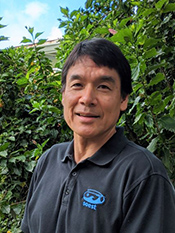
Garrett Apuzen-ItoResearch InterestsI use a variety of geophysical techniques to study the architecture and mechanics of the crust and tectonic plates. Students who work with me have strengths in math and physics and are interested computer data analysis and visualization. Seafloor spreading at mid-ocean ridges takes on a huge diversity of shapes and forms owing to the complex interactions of faulting and magmatism. For example, in the eastern Pacific, robust magmatism creates long straight ridges separated by transform faults, whereas in northern Atlantic, weak magmatism leads short segments of spreading with huge fault blocks. Potential ProjectsI invite an REU student to work with me and my post-doc to examine digital topography at mid-ocean ridges. We will address how differences in magma supply alter the style of faulting, the form of spreading segments, and the ways in which segments are offset. For additional information, please refer to my Potential REU Projects. |

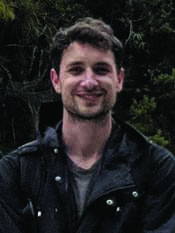
Team Mentors: Arjun Aryal and Kyle MurrayResearch InterestsOur research involves the use of data-driven approaches and numerical modeling to study geologic deformation processes caused by landslides, volcanoes, earthquakes, and other geologic phenomena. We use geodetic observation tools such as a Ground-based Laser Scanner, GPS, and Radar Interferometry (InSAR) to measure 3-D ground movement rates (millimeters to meters) to characterize processes such as interseismic activity on faults, inflation/deflation of volcanoes, subsidence related to extraction of groundwater, or coastal subsidence/uplift from sea-level changes. We also use the kinematic information or ground displacements (surface manifestation of the underlying geologic processes) to constrain geophysical models. For example, we can use ground movement measured from repeat laser scanner observations of a landslide to characterize the subsurface slip geometry of the landslide. These types of studies are useful for working towards better forecasting of natural hazards, or can offer a new perspective on the management of groundwater resources. This work is computationally intensive and involves primarily coding, data processing, and statistical analysis. Potential Projects
|
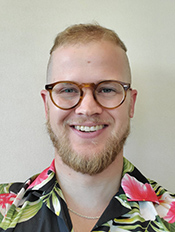
Sloan CoatsResearch InterestsThe term Common Era refers to the last ~2000 years, but it also has a scientific connotation, as this is the era common to paleoclimate reconstructions, observational data, and simulations from state-of-the-art climate models. I leverage these disparate sources of climate information to better understand variability on decadal and longer timescales—things like “megadroughts” over southwestern North America and trends in tropical Pacific sea surface temperatures. My work typically involves the development and implementation of novel statistical methods, including machine learning, as well as the use of climate modelling—particularly with the National Center for Atmospheric Research models. Potential Projects
|
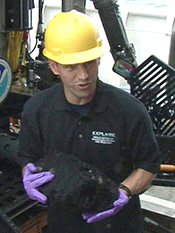
Jasper KonterResearch InterestsMy research interests are in mantle geochemistry, and magmatic processes that shape oceanic volcanoes. The majority of my work focuses on the use of radiogenic (Pb, Sr, Nd, Hf) and stable (Fe) isotopes, as well as major and trace element abundances to look at the sources and processes that form volcanic rocks. In particular, I work on volcanic chains that occur in the middle of the tectonic plates (so-called hotspots), studying how the volcanoes are constructed, how they relate to the tectonic plates, and how they relate to the world-famous example of the Hawaiian Islands. Potential Projects
|
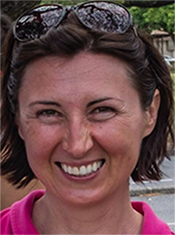

Team Mentors: Henrietta Dulai and Kelly TruaxResearch InterestsThe topic for this year’s REU project is in environmental geochemistry, studying how metals accumulate in and affect the physiology of plants. Plants exposed to atmospheric deposition of heavy metals, radionuclides and other contaminants incorporate these elements into their structures. This project with look at native Hawaiian species, including mosses and other plants, as organisms that accumulate and integrate metal contamination. Different parts of the plant are considered when observing accumulated metals. We measure how efficiently plants take up metals and how their physiology is affected after metal exposure through both chemical analysis and imaging using laser induced fluorescence. The goal is to develop a remote sensing method that could eventually be deployed via drone that could fly over a potentially contaminated site and provide evidence of that contamination just by imaging the plants using laser induced fluorescence. Potential ProjectsPotential projects will include cultivation and metal dosing of various plants, imaging of plants to measure their laser induced fluorescence (LIF), development of image processing methods, and potential field application. For example, we need to better understand how LIF results differ when the plant is exposed to a metal as opposed to other environmental stresses (draught, excessive dark periods, nutrient enrichment, etc). Various project directions are possible and will be discussed with the student. |


Team Mentors: Milton Garces and Meritxell ColetResearch InterestsAt the Infrasound Laboratory of the University of Hawaiʻi, we use very sensitive microphones to listen to low-frequency sounds in the atmosphere. These sounds, known as infrasound because they are too low in frequency to be audible to the human ear, can carry through the atmosphere for thousands of kilometers. ISLAʻs primary mission is to operate listening stations as part of the International Monitoring System of the Comprehensive Nuclear-Test-Ban Treaty. We also conduct research into acoustic source processes, propagation, instrumentation, signal and array processing, and software development. Potential ProjectsThis project will use infrasound data to investigate the 2022 Hunga Tonga-Hunga Haʻapai eruption. The devastating Hunga Tonga eruption generated low-frequency waves at planetary scales. The energy of the climactic explosion was primarily deposited in the atmosphere, producing acoustic waves, acoustic-gravity waves, internal gravity (buoyancy) waves, and exceptional surface-guided Lamb waves (Lamb, 1911).The Hunga Tonga Lamb wave energy suggests the equivalent TNT yield of the blast is comparable to that of the 1883 Krakatoa eruption (~200 MT). An atmospheric event of this magnitude has not been observed since Castle Bravo (US, Bikini, ~15 MT, 1954) and Tsar Bomba (USSR, ~50 MT, 1961). |
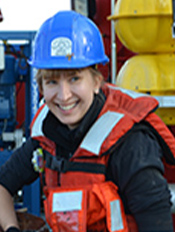
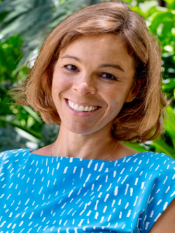
Team Mentors: Helen Janiszewski and Bridget Smith-KonterResearch InterestsWhen major volcanic eruptions or earthquakes occur in Hawaiʻi, geophysical data collection, processing, and sharing are critical activities that the scientific community and public rely on for timely understanding of hazards. Earthquake seismicity and Interferometric Synthetic Aperture Radar (InSAR) deformation maps are two types of data that are commonly used to understand volcanic activity in near-real time. Our research involves understanding the crustal structure beneath volcanoes and how this crust deforms over time. Using seismic and geodetic (InSAR, GPS) measurements, we are able to characterize geophysical processes such inflation/deflation of volcanoes and seismic activity on faults. These types of studies are useful for working towards better forecasting of natural hazards. We typically work with students that have a strong interest in physics, math, and computer programming, and students can expect to learn about seismic data availability and processing, seismic crustal imaging techniques, and InSAR/GPS data acquisition, processing, and modeling techniques. Potential Projects
|


Team Mentors: Marek Kirs, Camilo Mora, and Manny RamosResearch InterestsOur research interests at the Water Resources Research Center at the University of Hawaiʻi involve identifying, characterizing, and developing solutions for water and environmental problems in Hawaiʻi and on other Pacific Islands. Our research is predominantly focused on microbial water quality and related public health issues. Potential ProjectsThis project will explore the effectiveness of a novel device to remove various types of microbes (bacteria and viruses) from contaminated drinking and pool water. |
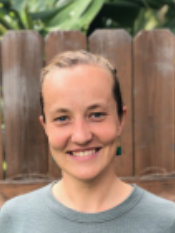
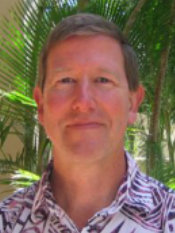
Team Mentors: Lucie Knor, Christopher Sabine, and James PotemraResearch InterestsOur research focuses on understanding the global carbon cycle, the role of the ocean in absorbing CO2 released from human activity, and ocean acidification. We also study carbonate and organic matter re-mineralization and basin-scale distributions of both natural and anthropogenic carbon in the ocean’s interior. Potential ProjectsThis project will investigate temporal variations in calcium carbonate flux from Hawaii Ocean Time-series (HOT) sediment traps. Research will include an analysis of carbonate fluxes over a 30 year time series to understand the scales of variability. A student working on this project will relate carbonate fluxes to dissolved carbon chemistry variations in time and with depth to assess if there are any correlations. |
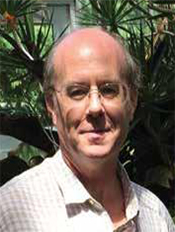
James PotemraResearch InterestsOur group uses direct measurements of ocean properties, such as temperature, sea level, waves, etc. to better understand ocean dynamics. This research has two broad foci: one involves the role of the ocean in the Earth's climate, the other is directed at providing data and products to the public. Through collaborations with the Oceanography Department, Ocean Resources Engineering and the Center for Microbial Oceanography, a series of measurements are routinely collected at Station ALOHA, a region roughly 100 miles north of Oahu. Here we maintain a sea-floor observatory called ACO. This provides real-time information about the deep ocean, including video, sounds, and various physical properties. We also conduct monthly cruises to Station ALOHA as part of the Hawaii Ocean Time-series (HOT) program. During these 5-day expeditions, a wide range of measurements are made, and various samples are taken and then processed back on campus. Finally, the third component at Station ALOHA is a “ocean reference site”, a surface mooring (buoy), that measures atmospheric conditions (wind speed, rainfall, etc.) and subsurface ocean quantities. All of these measurements provide us with relatively long-term time-series that can provide insights to how the ocean environment is changing, and the analyses may help better understand climate change. A second area where ocean observations are collected and used is within a program called the Pacific Islands Ocean Observing System (PacIOOS). This effort is aimed at providing real-time and forecast information to a wide range of ocean users, including coastal managers, planners, tourists, surfers, and so on. PacIOOS maintains observations in all the American Affiliated Pacific islands including Hawai‘i. We have a wide array of coastal measurements and numerical models, and then try to provide these data via web-based services. Potential Projects
|
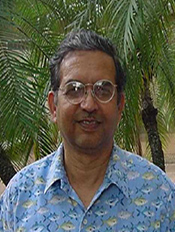
Shiv SharmaResearch InterestsMy research interests are in the fields of micro- and remote Raman spectroscopy of synthetic and natural materials including silicate glasses, minerals and biogenic minerals, and ices relevant to planetary exploration of the Moon, Mars, Venus and Europa. My Laboratory also have developed instrumentation for standoff Raman, fluorescence and laser-induced breakdown spectroscopy, and more recently underwater standoff Raman system. Details are available here. Potential Projects
|

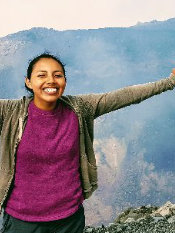
Team Mentors: Thomas Shea and Andrea TonatoResearch InterestsOur research focuses processes that occur at and underneath volcanoes. Through combinations of field campaigns, chemical analyses, textural characterization of crystals/vesicles, laboratory experiments, and analogue models, we aim to understand the origin of magmas, their modification en-route to the surface and the physical processes that are responsible for construction and destruction of volcanic edifices. Potential ProjectsWe envision a summer project that would involve building and testing a series of hands on scaled models that could be used in K-12 school environments. An emphasis of this work would be on both testing models and writing up standard operating procedures to be shared with the geosciences educational community. One example model may be a scaled gelatin model to monitor deformation at the surface of an analog volcano, where a LIDAR camera is used to measure depths of deformation processes. |
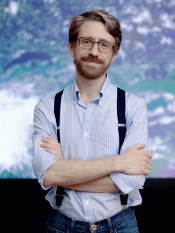
Giuseppe TorriResearch InterestsCumulus clouds represent one of the most intriguing phenomena in the Earth’s atmosphere. In recent decades, much progress has been made in our understanding of these systems, but there are still many open questions. This knowledge gap is one of the main contributing factors to the uncertainties of future climate projections. In our research, we use both numerical models and observational data to improve our understanding of the processes that govern the life of cumulus clouds, particularly in tropical areas like Hawai‘i. A better understanding of these processes will hopefully lead to an improvement of future climate predictions. Potential Projects
|
2017 Mentors | 2018 Mentors | 2019 Mentors | 2020 Mentors | 2021 Mentors | 2022 Mentors |2024 Mentors | 2025 Mentors |
[ Top of page ]
